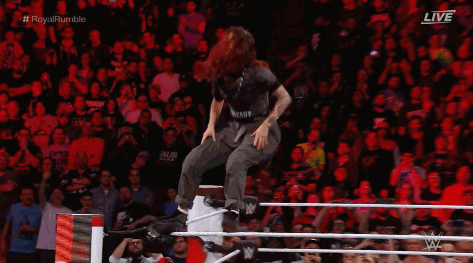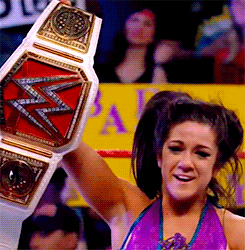Quote:
Originally Posted by MB.

Green tay?  |
Obviously you don't know French. It's says green té you might not recognise the 'é', it's a letter of the Latin alphabet. It is found in Catalan, Czech, Danish, English, French, Galician, Hungarian, Icelandic, Irish, Italian, Kashubian, Luxembourgish, Occitan, Norwegian, Portuguese, Slovak, Spanish, Swedish, Vietnamese, and Welsh languages, as a variant of the letter "e". In English, it may be observed as a pronunciation aid in loanwords (e.g., résumé from French) or romanizations (e.g., Pokémon from Japanese). This is also used in Dutch and Navajo. É or é is also used for /ɛ/ with a rising tone in pinyin, the Chinese language roman-alphabet transcription system. It is also used in Indonesian dictionaries to denote /e/, in contrast with E, e /ə/.Not to be confused with È. É, é (e-acute) is a letter of the Latin alphabet. It is found in Catalan, Czech, Danish, English, French, Galician, Hungarian, Icelandic, Irish, Italian, Kashubian, Luxembourgish, Occitan, Norwegian, Portuguese, Slovak, Spanish, Swedish, Vietnamese, and Welsh languages, as a variant of the letter "e". In English, it may be observed as a pronunciation aid in loanwords (e.g., résumé from French) or romanizations (e.g., Pokémon from Japanese). This is also used in Dutch and Navajo. É or é is also used for /ɛ/ with a rising tone in pinyin, the Chinese language roman-alphabet transcription system. It is also used in Indonesian dictionaries to denote /e/, in contrast with E, e /ə/. Usage in various languagesEdit: Czech and SlovakEdit É is the 5th letter of the Czech alphabet and Slovak alphabet, and represents /ɛː/. Danish, Norwegian, and SwedishEdit In Danish, Norwegian, and Swedish, the letter "é" is used to indicate that a terminal syllable with the vowel e is stressed, and is often written out only when it changes the meaning. See Acute accent for a more detailed description.bDutch Similarly to English, é is respected when writing foreign languages; mainly from French. It is also used to differentiate the article "een" which is equivalent to either "a" or "an" in English and "één" which is the number one. It is also used to add visual stress on words in the same way English might use italics. In the Dutch language, some people use "hé" as a greeting, like "hey" or "hi".bEnglish Main article: Acute_accent § English
In English, the e-acute has some uses, mostly in words of French origin, such as résumé, fiancée, and sauté, and names such as, Beyoncé, JonBenét, and Théo. Pokémon, the media franchise owned by Japanese corporation Nintendo, has also come into common use. Some Spanish words such as Puntapié or Toreé have some use in English.
FrenchEdit
Main article: French orthography
The letter é (pronounced /e/) contrasts with è (which is pronounced /ɛ/) and is widely used in French.
HungarianEdit
É is the 10th letter of the Hungarian alphabet and represents /eː/.
IcelandicEdit
É is the 7th letter of the Icelandic alphabet and represents /jɛː/.
IrishEdit
In Irish the acute accent (fada) marks a long vowel; thus é is pronounced /eː/.
ItalianEdit
É is a variant of E carrying an acute accent; it represents an /e/ carrying the tonic accent. It is used only if it's the last letter of the word. Example: perché (why/because, /perˈke/). Compare with caffè (coffee, /kafˈfɛ/), which has a grave accent.
KashubianEdit
É is the 8th letter of the Kashubian alphabet and represents /ɛ/. It also represents [ej] in some dialects, and represents [i]/[ɨ] in area between Puck and Kartuzy.
PortugueseEdit
In Portuguese, é is used to mark a stressed /ɛ/ in words whose stressed syllable is in an unpredictable location within the word, as in "pé" (foot) and "péssimo" (very bad). Where the location of the stressed syllable is predictable, the acute accent is not used. É /ɛ/ contrasts with ê, pronounced /e/. "É" is also the third-person singular conjugation of the verb "ser" (to be): ela é bonita (she is pretty).
SpanishEdit
In Spanish, é is an accented letter, pronounced just like "e" is. Both é and e sound like /e/. The accent indicates the stressed syllable in words with irregular stress patterns, as in "Éxtasis" or "Época". See Diacritic and Acute accent for more details.
Scottish GaelicEdit
É was once used in Scottish Gaelic, but has now been largely superseded by "è". It can still be seen in certain writings, but it is no longer used in standard orthography.
WelshEdit
In Welsh, word stress usually falls on the penultimate syllable, but one way of indicating stress on a final (short) vowel is through the use of the acute accent, often found on e in borrowed words, for example, personél [pɛrsɔˈnɛl] "personnel", sigarét [sɪɡaˈrɛt] "cigarette", ymbarél [əmbaˈrɛl] "umbrella".
Character mappingsEdit
Character É é
Unicode name latin capital letter e with acute latin small letter e with acute
Encodings decimal hex decimal hex
Unicode 201 U+00C9 233 U+00E9
UTF-8 195 137 C3 89 195 169 C3 A9
Numeric character reference É É é é
Named character reference É é
ISO 8859-1/2/3/4/9/10/13/14/15/16 201 C9 233 E9
Mac OS Roman 131 83 142 8E
Microsoft Windows users can type an "é" by pressing Alt+130 or Alt+0233 on the numeric pad of the keyboard. "É" can be typed by pressing Alt+144 or Alt+0201. Users can also type "é" by pressing ´ followed by an E or "É" by ´ then ⇧ Shift+E.
On US International and UK English keyboard layouts, users can type the acute accent letter "é" by typing AltGR+E. This method can also be applied to many other acute accented letters which do not appear on the standard US English keyboard layout.
In Microsoft Word, users can press Ctrl+' (apostrophe), then E or ⇧ Shift+E for "é" or "É".
On Mac OS X, users can press ⌥ Option+E, then E or ⇧ Shift+E for "é" or "É".
Using a compose key, users can hold Compose and press ' (apostrophe) E for "é" or Compose ' (apostrophe) ⇧ Shift+E for "É".











































 [/CENTER]
[/CENTER]























 Linear Mode
Linear Mode

